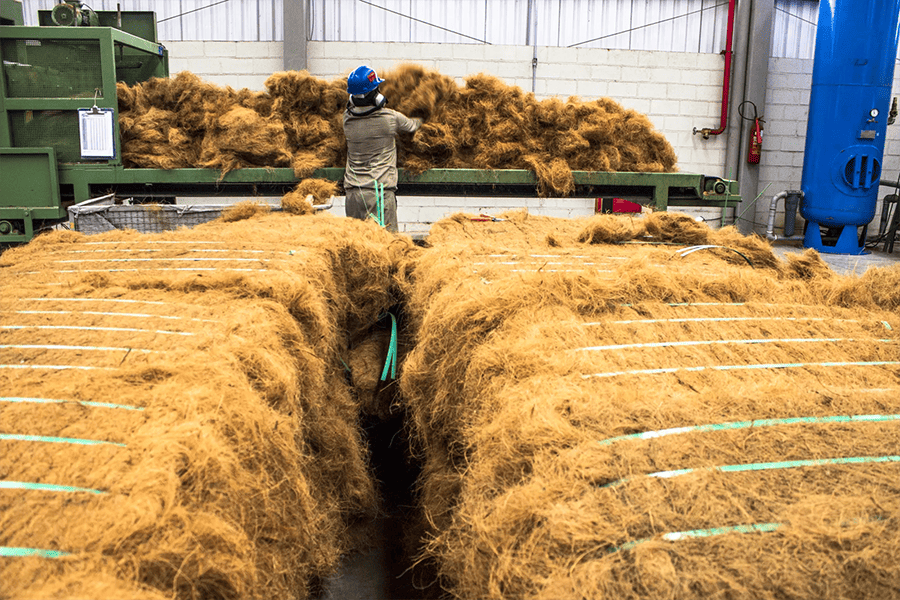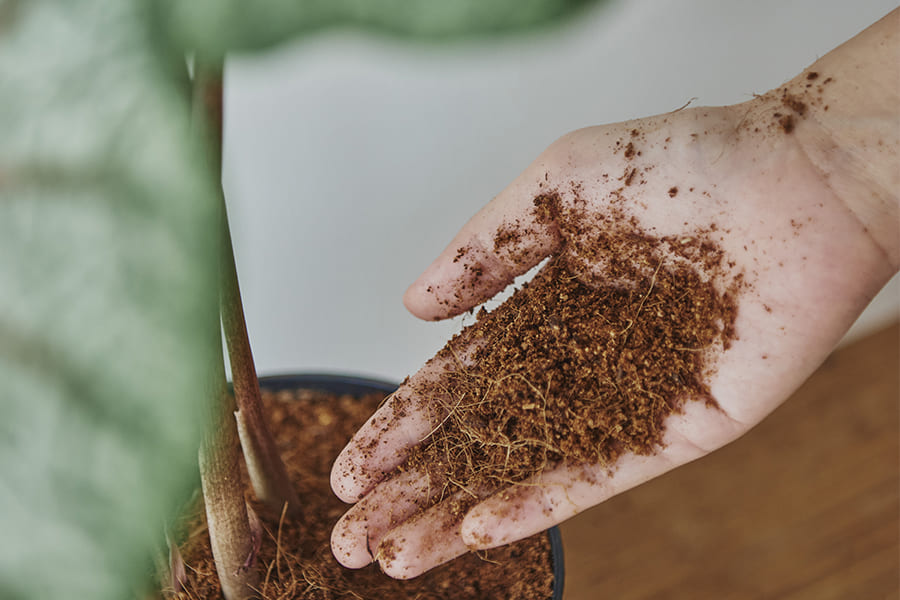BLOG POSTS & ARTICLES
COCO Coir Potting Mix for Vegetable Gardens

Gardening enthusiasts, both novice and seasoned, are constantly in search of the perfect potting mix to nurture their vegetable gardens. While traditional soil-based mixes have long been the go-to choice, an exciting alternative has gained popularity in recent years – COCO coir. In this blog, we're going to explore the fascinating world of COCO coir as a potting mix component for vegetable gardens and unveil its myriad advantages.
COCO coir, derived from coconut husks, offers distinct advantages for your vegetable garden. It excels in moisture retention, ensuring your plants have a steady water supply, reducing the risk of under watering and thriving in dry conditions. Additionally, COCO coir is a sustainable choice, repurposing coconut industry waste, and promoting eco-friendly gardening practices, minimising environmental impact. By opting for COCO coir, you not only enhance your garden's health but also contribute to a more sustainable and eco-conscious approach to gardening.
Understanding Vegetable Garden Soil Requirements
Recipe for Vegetable Garden COCO Coir Mix:
- 3 parts COCO coir for moisture retention and aeration.
- 2 parts compost or well-rotted manure for nutrients, microbial activity, and soil structure.
- 1 part perlite for improved drainage, aeration, and compaction prevention.
- 1 part garden soil for mineral content and native microorganisms.
- Optional: A handful of worm castings for added nutrients and microbial diversity.
Customising the Mix for Specific Vegetables
1. Leafy Greens (e.g., Lettuce, Spinach, Kale):
Leafy greens thrive in well-draining, nutrient-rich soil. Here's how to tailor your COCO coir mix for them:
Adjusting Ratios: For leafy greens, increase the proportion of compost in your mix. A mix that's heavier on compost (or well-rotted manure) will provide the necessary nutrients for lush, green growth.
pH Levels: Leafy greens typically prefer slightly acidic to neutral soil. Ensure that your mix's pH is around 6.0 to 7.0. You can use a pH metre to monitor and adjust the pH level as needed.
Nutrient Boost: To promote vigorous leaf growth, consider incorporating a balanced, organic fertiliser high in nitrogen. This will encourage healthy foliage development.
2. Root Vegetables (e.g., Carrots, Radishes, Potatoes):
Root vegetables require loose, well-draining soil to encourage healthy root development. Here's how to adapt your COCO coir mix for these crops:
Adjusting Ratios: Increase the proportion of perlite or coarse sand in your mix to improve soil aeration and drainage. A mix with good drainage will help prevent root rot and encourage straight, healthy root growth.
pH Levels: Root vegetables typically prefer slightly acidic to neutral soil, much like leafy greens. Keep the pH in the range of 6.0 to 7.0.
Nutrient Focus: Focus on balanced nutrition for root vegetables. Avoid excessive nitrogen, as it may promote excessive foliage growth at the expense of the root. A potassium-rich fertiliser can aid in root development.
3. Fruiting Plants (e.g., Tomatoes, Peppers, Cucumbers):
Fruiting plants require a mix that encourages robust fruit production. Here's how to adjust your COCO coir mix for these crops:
Adjusting Ratios: Increase the proportion of compost in the mix, similar to leafy greens. Fruiting plants benefit from a steady supply of nutrients. The compost will provide this.
pH Levels: Fruit-bearing plants often prefer slightly more acidic soil with a pH of 6.0 to 6.8. Adjust the pH accordingly.
Nutrient Focus: Fruiting plants have higher potassium requirements for fruit development. Using a fertiliser with higher potassium levels and lower nitrogen can support healthy fruiting.
4. Root Vegetables (e.g., Beets, Turnips, and Rutabagas):
Adjusting Ratios: Root vegetables, like carrots and radishes, prefer well-draining soil. You can increase the proportion of perlite or coarse sand in your mix to ensure adequate drainage and prevent root rot.
pH Levels: Maintain a slightly acidic to neutral pH level (around 6.0 to 7.0) to promote healthy root development.
Nutrient Focus: A balanced fertiliser with slightly less nitrogen and more phosphorus and potassium is ideal for root vegetables. This encourages root enlargement and overall plant health.
5.Brassicas (e.g., Broccoli, Cabbage, and Brussels Sprouts):
Adjusting Ratios: Brassicas require well-drained, fertile soil. Increase the compost content in your mix to provide the necessary nutrients for these leafy vegetables.
pH Levels: Maintain a slightly acidic to neutral pH level (around 6.0 to 7.0) for optimal growth.
Nutrient Focus: Brassicas can benefit from higher nitrogen levels to encourage leaf growth, but don't overdo it. Consider an all-purpose balanced fertiliser with a slightly higher nitrogen content.
6. Legumes (e.g., Peas, Beans, and Lentils):
Adjusting Ratios: Legumes, like peas and beans, are nitrogen-fixing plants. They require less nitrogen in the soil. Reduce the compost content and maintain good drainage with perlite or sand.
pH Levels: Aim for a slightly acidic to neutral pH (around 6.0 to 7.0).
Nutrient Focus: Legumes require less fertiliser overall. Choose a balanced, low-nitrogen fertiliser to support overall plant growth.
7.Alliums (e.g., Onions, Garlic, and Leeks):
Adjusting Ratios: Alliums prefer well-draining, loose soil. Increase the proportion of perlite or sand for proper drainage.
pH Levels: Maintain a slightly acidic to neutral pH (around 6.0 to 7.0).
Nutrient Focus: Alliums require less nitrogen. Use a balanced fertiliser with less nitrogen but adequate phosphorus and potassium for good root and bulb development.
8. Vining Vegetables (e.g., Cucumbers, Melons, and Squash):
Adjusting Ratios: Vining vegetables need a mix that retains moisture. Increase the compost content to provide ample nutrients and water retention.
pH Levels: Maintain a slightly acidic to neutral pH (around 6.0 to 7.0).
Nutrient Focus: These plants often require balanced nutrition with a slightly higher potassium content to support fruit development.
By following these instructions, you'll be well-prepared to establish a successful vegetable garden using a COCO coir mix. Happy Gardening!











__(3).jpg)









